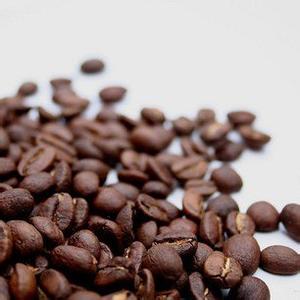Description of the characteristics and Flavor of Yunnan Coffee beans A brief introduction to the taste of the growing environment
Description of the characteristics and Flavor of Yunnan Coffee beans A brief introduction to the taste of the growing environment
Small-grain coffee, also known as Arabica (Arabica), is the most traditional Arabica coffee variety, generally known as Yunnan small-grain coffee, has been cultivated for more than a hundred years. Before the 15th century, coffee was monopolized by the Arab world for a long time, so it was called Arabian coffee by Europeans. Originally, all the commercial coffee in the world were small-grain coffee, but it was not until a large-scale disease occurred at the end of the 19th century that growers began to look for other disease-resistant varieties. Small-grain coffee is still the main variety of coffee, accounting for about 3/4 of the world's total coffee production. Due to the unique geographical environment and climatic conditions, Yunnan small grain coffee has formed a unique flavor of strong but not bitter, fragrant but not strong, with a little fruit flavor. World-class coffee experts evaluate it as the best coffee in the world, and its cultivation techniques. The yield per unit area is also world-class.
Choose the coffee mother tree which is fully ripe, normal in shape, full in shape, the same size and with two seeds. To remove the peel of the selected fruit, you must be careful to prevent the seeds from being damaged and affect the germination rate, and then put the peeled seeds in a ventilated and cool place to dry. After the seed shell is whitened, the seeds can be stored, and the seeds can not be exposed to the sun. Put the seeds into bamboo baskets or cloth bags and turn them once a month in the mild sun, so that the seeds stored for a long time can maintain a high germination rate. Coffee seedlings need shade conditions, so the seedling land should be selected in shady slopes and sandy soil areas with certain shade conditions and water sources. The general method of seedling preparation is adopted to dig and loosen the soil into a seedbed and then sow seeds. According to sowing 1kg seeds, 1.5m2 seedbed is needed, and there are about 3500-4000 seeds per kilogram. If the emergence rate is more than 80%, 2500-3000 seedlings can be transferred. Before sowing, the seeds can be soaked in 40 ℃ warm water for 12 hours, and the effect is the best.
The planting of small-grain coffee depends on different varieties, pruning system, climate and soil conditions, and agricultural technical measures. The commonly used row spacing is 2 m × 1.2 m (278 plants per mu), 2 m × 1 m (333 plants per mu), 1.8 m × 2 m (185 plants per mu). The specification of 2 m × 1 m is generally adopted in Tanglang Township. Generally, it is planted after the beginning of the rainy season. Tang Lang has a higher temperature, and Rain Water is concentrated in the second half of the year. It is appropriate to plant in July-September and choose cloudy days or moist soil to ensure seedling survival. The selection of strong seedlings requires stable terminal buds, strong plant growth, well-developed roots and no diseases and insect pests. Inferior seedlings, curved roots and malformed seedlings should be eliminated. According to the different conditions and requirements of planting materials at that time, there are four different methods for planting seedlings.

Important Notice :
前街咖啡 FrontStreet Coffee has moved to new addredd:
FrontStreet Coffee Address: 315,Donghua East Road,GuangZhou
Tel:020 38364473
- Prev

A brief introduction to the Flavor description of Coffee Coffee between Sidamo and Yega Snow Coffee
The relationship between Drima Zede and Yega Coffee Flavor description Taste processing Grinding Calibration brief introduction to the Grinding scale Candlestick (Candlestick, the name of this Yega Xuefei) means "Best Approach" in the local dialect. According to the information provided by the original factory, this Yega Xuefei is a series of tailor-made products developed based on 90 + years of experience. It is difficult to get pure in the old way of solarization.
- Next

Description of roasting degree, taste and flavor of Ugandan coffee beans A brief introduction to the treatment of varieties in producing areas
A brief introduction to the roasting degree and flavor of Ugandan coffee beans; Coffee originated in Ethiopia in Africa and then moved to Yemen in the Arab region of the Middle East, so some people call it Arabica. Then it spread to Java, Indonesia, and from there to Latin America. African coffee was previously grown in the Congo, Uganda and other places, for Robster coffee, but also
Related
- Detailed explanation of Jadeite planting Land in Panamanian Jadeite Manor introduction to the grading system of Jadeite competitive bidding, Red bid, Green bid and Rose Summer
- Story of Coffee planting in Brenka region of Costa Rica Stonehenge Manor anaerobic heavy honey treatment of flavor mouth
- What's on the barrel of Blue Mountain Coffee beans?
- Can American coffee also pull flowers? How to use hot American style to pull out a good-looking pattern?
- Can you make a cold extract with coffee beans? What is the right proportion for cold-extracted coffee formula?
- Indonesian PWN Gold Mandrine Coffee Origin Features Flavor How to Chong? Mandolin coffee is American.
- A brief introduction to the flavor characteristics of Brazilian yellow bourbon coffee beans
- What is the effect of different water quality on the flavor of cold-extracted coffee? What kind of water is best for brewing coffee?
- Why do you think of Rose Summer whenever you mention Panamanian coffee?
- Introduction to the characteristics of authentic blue mountain coffee bean producing areas? What is the CIB Coffee Authority in Jamaica?

